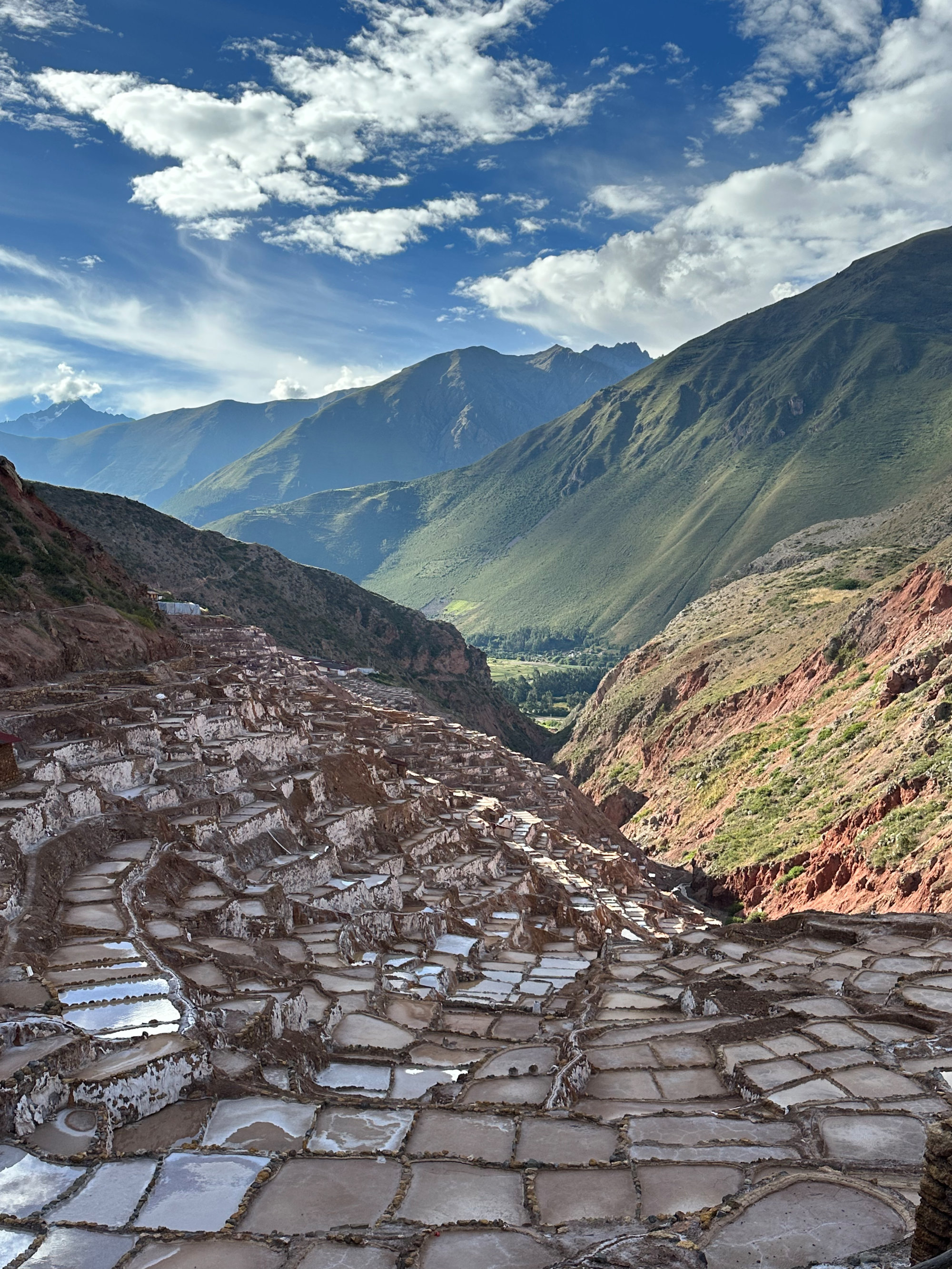Maras Salt Mines: History and Visiting Tips
Region: South America
Country: Peru
Exploring the Maras Salt Mines in Peru’s Sacred Valley
Nestled in the heart of the Sacred Valley of the Incas, the Maras Salt Mines, locally known as “Salineras de Maras,” offer a unique and breathtaking experience that captivates adventure seekers, history buffs, and culinary enthusiasts alike. The terraced salt pans here have been in use since pre-Inca times, reflecting a rich history intertwined with fascinating cultural practices. Join me as we delve into the enchanting world of Maras and uncover the allure of this ancient site.
A Journey Back in Time: The History of Salineras de Maras
The origins of the Maras Salt Mines date back to around 200 AD, making it a living relic of ancient engineering. Originally used by the Chanapata culture, the site was later expanded by the Incas. The locals channel a salty spring into thousands of shallow pools. As the water evaporates, the beautiful pink salt is left behind and later harvested by hand.
Salt Pans and Scenic Views
A visit to the Maras Salt Mines offers more than just a lesson in history. The panoramic vista of countless salt pans set against the green mountains is an unforgettable sight. Each pan, owned and mined by local families, changes colors through shades of white, pink, and brown. It’s both a photographer’s dream and a cultural immersion, showing a traditional way of life that continues in the modern age.


Culinary Gold: Pink Salt of Maras
Maras salt is renowned for its unique flavor and high mineral content, hailed by chefs worldwide as a gourmet product. The salt’s rich flavor enhances any dish, from simple salads to elaborate main courses. While visiting Maras, savor the opportunity to taste fresh salt and even purchase some to take home—perfect for food enthusiasts eager to add an exotic twist to their culinary creations.
Nearby Attractions: Exploring More of the Sacred Valley
After witnessing the striking beauty of the salt mines, consider exploring other nearby wonders. Just a short drive away is Moray , an archaeological site featuring circular terraces believed to have been an agricultural laboratory for the Incas. Between these stops, the charming town of Urubamba offers delightful eateries and comfortable accommodations.
Travel Tips for Visiting Maras
Best Time to Visit: The dry season from April to October is ideal for visiting Maras, offering clear skies and easier access to the mines.
Currency: Peru uses the Sol (PEN). Having local currency on hand is crucial for small purchases, such as souvenirs and snacks.
Entry and Accessibility: There is a nominal entrance fee to visit the salt mines, which goes towards maintaining the site. Keep in mind that the terrain around the salt pans can be slippery and uneven, so wearing sturdy, non-slip shoes is a must.
Getting There: Maras is accessible from Cusco or Ollantaytambo by road. You can join a guided tour or rent a car for more flexibility. While public transport options exist, they might require more time and Spanish proficiency to navigate.
Preserving the Treasure: Responsible Tourism
As we explore such unique locations, it’s vital to practice responsible tourism. Stick to the designated paths in Salineras de Maras, avoid touching the salt pools, and respect local customs and practices. By doing so, we help ensure that these heritage sites remain intact for future generations to admire and learn from.
A trip to the Maras Salt Mines is a dive into the past, a visual feast, and a culinary adventure all rolled into one. Whether you’re tracing the footsteps of ancient civilizations, capturing the landscape’s surreal beauty, or savoring the pink salt, Maras promises an enriching, unforgettable experience. Prepare to be amazed by the natural and historical wonders of Peru’s Sacred Valley as you create your own adventure in this mystical part of the world.


